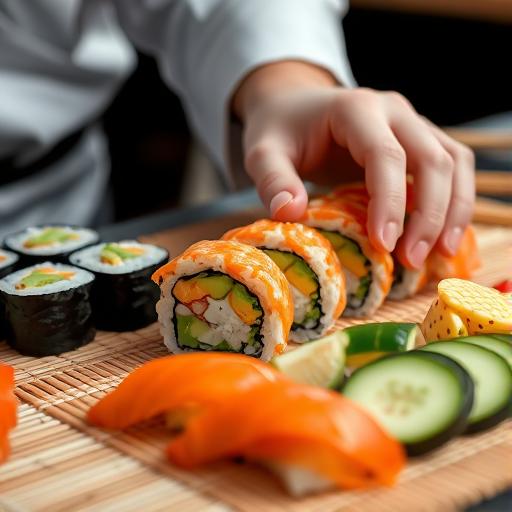Cultivating Resilience Through Food Preservation: Nourishing Body and Spirit

Cultivating Resilience Through Food Preservation
Cultivating Resilience Through Food Preservation: Nourishing Body and Spirit
Understanding Resilience: More Than Just a Buzzword
Resilience is often tossed around as a buzzword, evoking images of toughness and hardiness. However, its true essence lies in our ability to bounce back from setbacks and adapt to challenges. Resilience is a crucial trait in today’s fast-paced world, where challenges can disrupt our lives without warning. To foster resilience, we need to develop coping strategies that not only enhance our mental and emotional fortitude but also contribute positively to our lifestyles. It involves cultivating an attitude that embraces change and seeks growth, making it essential for personal development.
One way we can build this resilience is through the practice of food preservation. When we learn how to preserve food, we face the uncertainties of life with a greater sense of control. Food preservation isn't merely about saving cucumbers in a jar or canning tomatoes; it's about creating sustainability in our diets. It teaches patience, creativity, resourcefulness, and planning — skills that are transferable to many other areas of life. By investing our energy into this practice, we are not just ensuring we have food ready for use; we are also cultivating a mindset that can flex and adapt, processes that can greatly contribute to our emotional health and resilience levels.
The Importance of Food Preservation in Building Resilience
Food preservation techniques have been around for centuries, evolving as societies advanced and changed. From drying and salting to canning and fermenting, these practices are more than just methods for extending the shelf life of food; they represent a proactive approach to preparing for challenges. When you rely on your ability to peel, chop, pickle, and jar, you engage in a form of self-sufficiency.
In the face of unforeseen circumstances such as economic downturns, pandemics, or natural disasters, having preserved food can be the difference between scarcity and abundance. This foresight reduces anxiety about where your next meal will come from. You become not just a consumer, but a creator of your own resources. Each jar of jam or can of beans is a testament to your hard work and planning, boosting your confidence in your capability to handle life's unpredictability. The act of food preservation instills a sense of agency that reinforces resilience throughout all facets of life.
"It is not the strongest of the species that survive, nor the most intelligent, but the one most responsive to change." — Charles Darwin
Practical Techniques for Food Preservation
There are several practical methods to preserve food, each with its own unique benefits. Becoming adept in these techniques not only empowers you to make the most of your harvest but also strengthens your ability to adapt and thrive. Here are some essential food preservation methods:
- Canning: This method involves sterilizing jars and sealing them with food inside, allowing them to last for months or even years. It’s ideal for fruits, vegetables, and sauces. As you can various foods, you can monitor your inventory and adapt based on your usage and preferences, developing a deeper understanding of your nutritional needs and seasonal availability.
- Freezing: Freezing fruits and vegetables is a quick method to preserve their freshness. Blanching before freezing retains nutrients and color. This action conserves food while training you to manage what you consume seasonally, eliminating waste.
- Dehydrating: Drying fruits, vegetables, and meats removes moisture, which inhibits spoilage. This technique not only extends shelf life but also creates a portable snack option that can promote healthy eating habits.
- Fermenting: Fermentation is more than just a preservation method; it enriches food and promotes gut health. Foods like sauerkraut or yogurt are examples where beneficial bacteria convert sugars into acids, preserving the food while providing nutrition.
- Pickling: The process of pickling involves immersing foods in vinegar or brine, a method popular for cucumbers, but applicable to many other vegetables. This tangy approach enhances flavor while extending the shelf life of seasonal produce.
By utilizing these techniques, you are equipped with the tools to create a stable food supply, giving you peace of mind in times of uncertainty. Your toolkit of culinary skills not only ensures your survival but also fosters a sense of pride in your achievements.
How-To: Start Your Food Preservation Journey
- Start by selecting a food preservation method that interests you the most.
- Gather your supplies, whether that be jars for canning, a freezer, or a dehydrator.
- Begin with a small batch or single recipe to build your confidence and hone your skills.
- Expand your repertoire by learning new recipes or techniques each season.
- Create a plan for what you’d like to preserve based on seasonal availability and nutritional goals.
Embracing a Mindset of Growth and Adaptability
Resilience is intrinsically linked to our mindset. As you embark on your food preservation journey, it's crucial to cultivate a mindset that's open to growth and adaptability. Mistakes will happen, whether it's a botched canning job or a failed batch of pickles. Instead of viewing these experiences as failures, treat them as valuable lessons. Each stumble offers insight and helps refine your approach for the next attempt.
With food preservation, the journey is equally as important as the outcome. Reflect on what works, adjust your techniques, and be willing to experiment. This process encourages resilience not just in the kitchen but across all areas of life. You begin to shift your thinking from fear of failure to an understanding of growth through experience. Every jar sealed or fruit dehydrated becomes a symbol of your resilience and willingness to embrace the process.
"Growth is painful. Change is painful. But nothing is as painful as staying stuck somewhere you don’t belong." — N.R. Narayana Murthy
Building a Support System Through Shared Experiences
A vital aspect of resilience is building and relying on a supportive community. The journey of food preservation can be an enriching experience when shared with family, friends, or like-minded individuals. Consider organizing canning parties, preserving workshops, or community garden events. These environments not only provide hands-on learning experience but also create space for dialogue, sharing successes and overcoming challenges together.
As you surround yourself with others on similar journeys, you provide and receive encouragement, motivation, and new ideas. Sharing knowledge fosters an environment where all participants can thrive, expanding understanding and skills in food preservation while simultaneously nurturing emotional connections with others. A support system instills a sense of belonging and boosts your overall resilience, reinforcing that you are not alone in your endeavors.
Conclusion
In a world laden with uncertainty, resilience is not just a survival mechanism—it's a way of thriving. Embracing food preservation techniques empowers you to reclaim control over your resources while fostering adaptability and growth. Every canning session, freezing batch, or fermenting experiment is a step towards building your inner strength and nurturing a mindset that can withstand adversity.
As you embrace these practices and engage with your community, you will not only nourish your body but also cultivate a resilient spirit that can face life’s challenges head-on. Remember, resilience is a journey, not a destination. It’s about continuously evolving and adapting to life’s twists and turns, taking every lesson as a building block towards a stronger future. Let your journey through food preservation be a testament to your resilience and a source of inspiration for others to follow. Embrace the process—every step you take will contribute to the resilience you seek.

